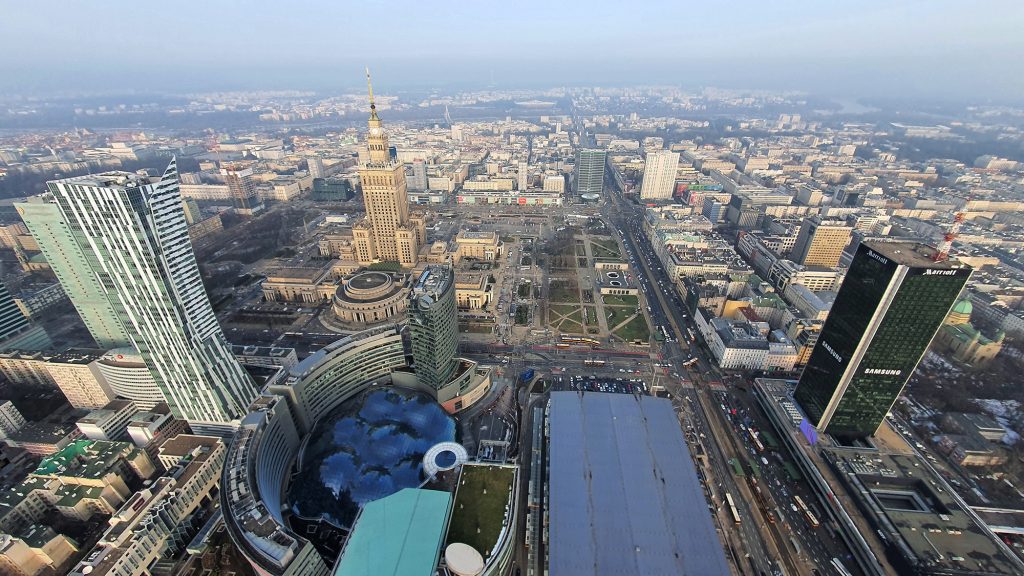In this autumn’s Polish elections, Warsaw, Krakow, Gdansk, Poznan, Wroclaw, and Lodz all chose pro-European, liberal-conservative, and left-wing parties. These urban centres opted for the opposition headed by the Civic Platform of Donald Tusk – who was just recently elected prime minister – resulting in its victory. At the same time, in rural areas, especially on small settlements, it was the nationalist-conservative ruling party led by Jaroslaw Kaczynski, PiS, the Law and Justice Party, that emerged victorious.
The Western side
Historian and polonist (an expert in Polish studies) Miklós Mitrovits sees the reasons for this phenomenon in the much more conservative lifestyle of rural Poland, where the Catholic Church plays a strong role in everyday life, and the population is of course also more religious. At the same time, according to the main researcher of the Central European Research Institute of the National University of Public Service, the ‘500 Plus’ program had a lot more weight in these rural areas. The program in question provides families with an assistance of 500 zlotys per child, up to three children (1 Polish zloty is roughly equivalent to 85 Hungarian forints.) The measure lifted up many families from the brink of deep poverty, increasing local consumption and bringing life back to many small villages, which helped boost the popularity of PiS. The promise of 13th and 14th-month pensions played a similarly significant role in the rural areas dominated by small settlements.
Regionally, the conservative side is particularly strong in areas that belonged to the Russian Empire until 1918, Mitrovits explains. This may be related to the fact that the majority of the population of these regions did not end up here via resettling schemes, making nationalist sentiments stronger. However, these populations are shrinking; while in the territories belonging to Prussia before 1918, there are still millions of resettled inhabitants (these people were moved here from present-day Ukraine and Belarus on Stalin’s initiative following World War II). In the western, formerly Prussian territories, the Catholic Church is also not as strong as in the eastern Polish territories once ruled over by the Russian tsar.
The polonist believes that people in western Poland are less conservative and have also inherited a more developed infrastructure to begin with. The situation is similar in the capital: after 1945, new residents moved to Warsaw, and the city has no “living, pre-1945” history, neither in heritage architecture nor in family history. After 1990, the capital was americanised, creating an island in the eastern – formerly Russian – territories.
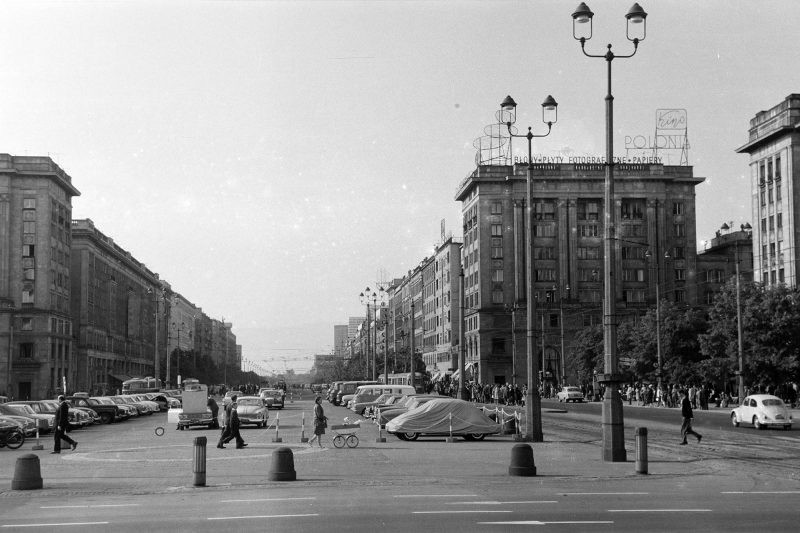
Generally speaking – as opposed to Hungary – the Polish settlement structure features several major cities, not just one large capital. The lifestyle and worldview of urbanites differ from those of rural inhabitants. More urbanised, less state-dependent social groups are less religious, more liberal, and have different needs – therefore, different issues prompt them to cast their ballots.
It was not PiS’ camp that the opposition needed to persuade about voting, but those outside of it. According to numerous analysts, this year’s events were partially made possible by several mistakes made by PiS: the quasi-ban on abortion by the Constitutional Court mostly tied to the conservative ruling party mobilised Polish women, especially younger ones. Polish author Sylwia Chutnik wrote in The Guardian after the elections: “a near-total ban on abortion enabled by a judgment of the constitutional tribunal in 2020 brought hundreds of thousands of people on to the streets, rallying under the banner of the Women’s Strike. But that did not stop our rights being curtailed, and at least six women were forced to carry a dead foetus to term, dying of sepsis in our public hospitals”.
Church scandals did not help the conservatives, either, while the anti-immigration propaganda also suffered a heavy blow when it was revealed that many in developing countries had illegally received Polish visas.
Within Slovakia, it was in Bratislava and its surroundings, as well as in Košice, where the pro-western, liberal, and environmentally-oriented Progressive Slovakia (PS) won, but the party only secured the second place in the overall elections. The left-wing, populist-nationalist Smer-SD, led by Robert Fico, was victorious in most of the country. In fact, the further to the north and east we go in Slovakia and the poorer the local population, the better Smer-SD or its allies, Hlas or the Slovak National Party (SNS), performed.
These three parties, representing the two nominally social democratic forces and the far-right SNS, will form the new government coalition. PS, a party strong in western Slovakia, performed weakly in the eastern part of the country. In this, Hungary’s northern neighbour also displays the pattern wherein the “westernmost” party was mostly voted for in the country’s western corners and the capital.
This also applies to Bulgaria, where the candidate supported by the Western-aligned party alliance PP-DB (the party names translate to “We continue the change” and “Democratic Bulgaria”) won the mayoral election in Sofia. PP-DB also won in Varna, the hotspot of Bulgarian tourism. Although, unlike Sofia, Varna is located in the eastern part of the country, the city’s situation is quite special, and its voter behaviour constitutes an island much like that of Bratislava, Košice, Sofia, and Warsaw.
In Hungary, Budapest is similarly considered an island of the opposition or the liberal left. However, the capital also underwent strong internal reorganisation in recent years, as Buda’s wealthy, formerly Fidesz-dominated districts are now considered opposition strongholds.
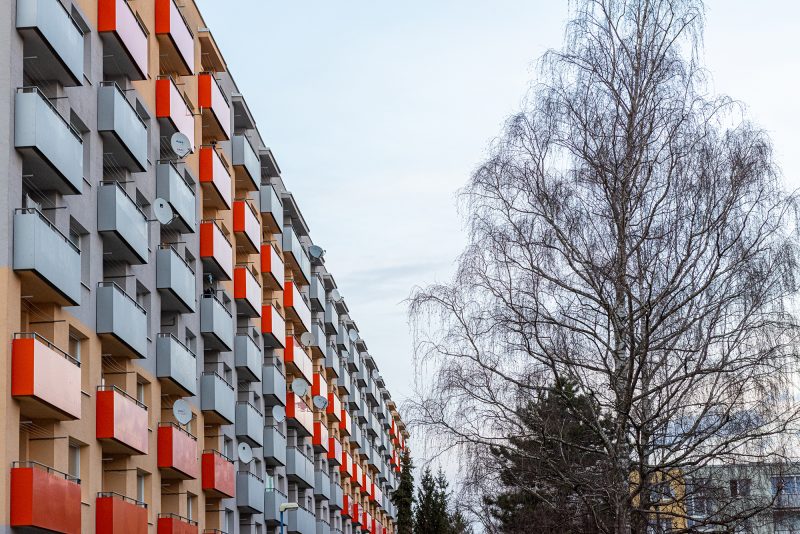
“It’s not a new thing, and it’s not unique to Hungary that urban and rural voters vote differently”, confirms political scientist Dániel Róna to 24.hu. One sociological explanation for this general tendency, applicable to several countries, is that people living in small settlements are generally more religious, adhere more to traditional values, are more involved in agriculture, and are less likely to work for multinational companies – explained the director of the 21 Research Centre.
So basically, urban and rural dwellers interact with fundamentally different people, and are influenced by different forces. Now focusing on the case of Hungary, people encounter teachers, coaches, CEOs, and colleagues expressing government or opposition opinions in different proportions in large cities and small settlements. Those in small settlements also hear the opinions of priests and pastors much more frequently. The influence of the church is much less in big cities – Róna adds. Therefore, the effect Mitrovits speaks about regarding Poland is also applicable in Hungary.
In Budapest’s District 6 – Terézváros – every fourth resident is a foreign citizen, but this ratio is as high as 23.5% in District 5 as well. Multiculturalism is a daily experience for a significant portion of urban dwellers, while it is much less so for those in rural areas, summarises Róna, adding that some political actors intentionally play on this difference. “Hungary is unique in this respect because Fidesz wants to strengthen the differences between the city and the countryside. The government renovated rural hospitals before those in Budapest. In general, most development and construction projects, as well as financial support, also benefit rural areas.
The dependency of those living in small settlements
According to the director of the 21 Research Centre, opposition parties also contribute to this process. They organize their events predominantly in large cities, while the government ensures that there are (political) programs and events in small settlements, too. People in less populated areas are more likely to locally encounter Fidesz representatives and activists than people of the opposition. In many places, residents wouldn’t even dare attend an opposition event – notes Róna.
All this is a specifically Hungarian phenomenon because, although the conservative ruling party in Poland also tried to win over the rural areas, the kind of dependency that characterises Hungarian small settlements seems unique in the region. This pertains also to the employment of those in the government’s public work scheme – continues Róna – who can easily be excluded from these employment programs, something local elites can exploit. But municipal public employees and elementary school teachers also depend on local potentates and the state.
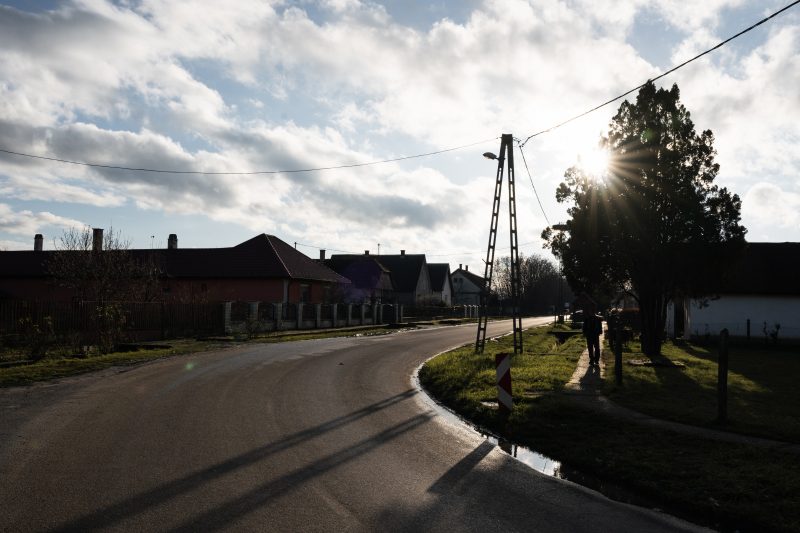
Political scientist Imre Kovách tells us about his sociological research concerning dependency systems observable in the Hungarian countryside, which reflect not merely a medieval-type lord-serf relationship, but are based on a certain kind of reciprocity. To the local voter, living in a state of vulnerability, the local ‘boss’ also provides community programs, as well as a sense of belonging, identity, and livelihood. Even if the latter seems low-level from a Budapest perspective, it usually has no alternative.
This obviously cannot be done in every area of the country, but there are regions where there really aren’t any significant employers other than the state, local governments, and their companies. So, while there may not be actual feudal landlords, local petty kings do exist in Hungary – these players rake in money for their settlements, can bring investments to the region, “arrange” things in higher spheres of power, and can preferably also develop the community, for example by organizing a village fair, which can of course also increase the influence of certain local wielders of power – the political scientist adds.
Fidesz plays on these differences and even increases the contrast between the city and the village. According to Róna, Fidesz achieves weaker results in Budapest compared to 2010, while the opposition receives fewer and fewer votes in small settlements.
According to Róna, this is because the government has realised that it’s the less educated labourers and tradesmen living in smaller settlements, as well as the politically less interested individuals living in worse social conditions that will be the easiest to win over with the government’s interpretation of reality. The political scientist believes that Fidesz no longer even tries to convince intellectuals and urban graduates. As Districts 2 and 12 in Buda – which were long-standing right-wing strongholds – have the highest proportion of university graduates in Hungary, Fidesz’s popularity has dropped significantly here compared to the 2000’s.
Fidesz is very well aware of this, and that’s why the party doesn’t want to spend resources on dealing with these areas – perhaps a lost cause to begin with – as there is much less chance of influencing its inhabitants. And looking at the effectiveness of each forint’s worth of propaganda, it is more effective for Fidesz to influence a Borsod County labourer than a trilingual engineer-economist in District 12 who has worked in several countries. This is how it could happen that in the formerly left-wing industrial town of Ózd, Fidesz won by a landslide in the 2022 parliamentary elections, even though it was MSZP (Hungarian Socialist Party) and later opposition right-wing party Jobbik that had a traditionally strong position there following the 1989 regime change. The same phenomenon can be observed within Budapest: the dominance of left-wing parties has decreased in panel block estates, while Fidesz has weakened in Buda.
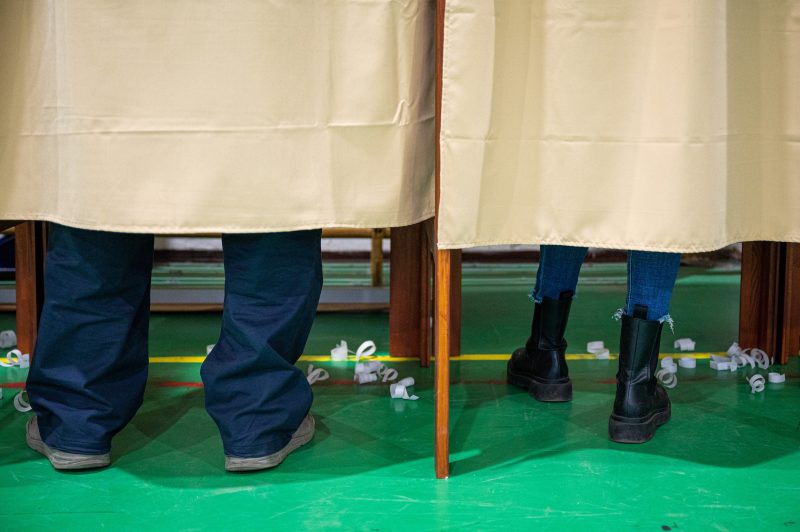
“City and countryside in Hungary – at least in terms of divisive discourses – were often set against each other by intellectuals, who created the rural-urban opposition more than a hundred years ago,” said Csaba Katona of the Hungarian National Archives. – “Created, in the sense that both camps of intellectuals lived and still live in Budapest, albeit perhaps frequenting different coffeehouses. One group, the ‘folk writers’ of the interwar period, and then several decades later, the ‘national-folk writers’ of the Kádár era (1956-1989) presented the »clean« and »moral« countryside, the »folk«, the keeper of the Hungarian national character, as the paragon of traditional values. Meanwhile, the other camp emphasised the advantages and values of the “fresh-air,” cosmopolitan urban environment from the perspective of universal values and human rights” – continues Katona.
Traditional rural life – it’s a matter of perspective – can be “purer” and “quieter”, but can also be a shackle for those who, not fully identifying with the values of their surrounding environment, would rather blend into a metropolitan crowd where they are more readily accepted and treated more tolerantly – and also are just generally less visible.
The disciplinary power of community
The disciplinary power of communities is more pronounced in smaller circles, as expressed by many 19th-century Hungarian authors telling in countless instances the story of the “unspoiled rural person” who either is ‘ruined’ in the big city or, experiencing the conditions there, returns to their rural homeland. The roots of this tradition run deep; for example the work of József Gvadányi, “A Village Notary’s Journey to Buda”, was published in 1790. A quasi-counterexample is Sándor Hunyadi’s “The Red-Light House”, serving as the basis of Károly Makk’s 1977 movie ”A Very Moral Night”. The comedic plot depicts the madam and her girls misleading a mother visiting her son, who lives in a big city brothel, by creating the pretence of a respectable household.
The 19th century Hungarian conception of society was, of course, characteristic of a society organized along conservative values. Although feudalism and the feudal social order came to a formal end in 1848 to be ultimately replaced by civil society with the 1867 Austro-Hungarian Compromise, its legacy would live on for a long time, shaping the thinking and worldview of Hungarians for generations to come. This legacy could bind smaller communities more easily, but it eroded faster in the cities which served as the “engine” of modernity, so to say – explains the historian-archivist.
Within the vast crowds of the city, it’s easier even today to find friends and acquaintances closer to one’s own way of thinking, so cities can serve as organising grounds not only for progressives, but conservatives as well. Cities, due to their larger area and population, as well as the polarised nature of their inhabitants, provide space for many different cultural institutions, whereas in smaller settlements, there might often be only a single cultural centre. There are more theatres, galleries, and also more football teams in a city; and sports clubs often express cultural identity as well – says Katona.
Therefore, it is much more difficult to restrict the “public thinking” of urban dwellers – the same applies for the news that reach them. Regarding this point, Katona joins Róna to explain that it is much easier to control local and national news in a small settlement through ownership of regional newspapers and the allocation of frequencies for local radios; and often local TVs are also in the hands of the ruling power, making it much easier to standardize thinking in a smaller community.
Moreover, there has been a conception somewhat tangibly present in Hungarian political tradition at least since the 19th century, that politics is the business of both physically and socially distant ‘smart people’, the “business of lords”, so to speak, which is incomprehensible anyway to anyone outside their circles. In other words, the paternalistic view of the state is still much stronger in Central-Eastern Europe – adds the historian.
